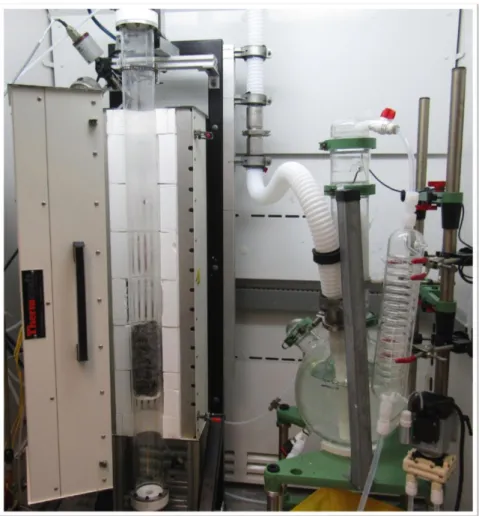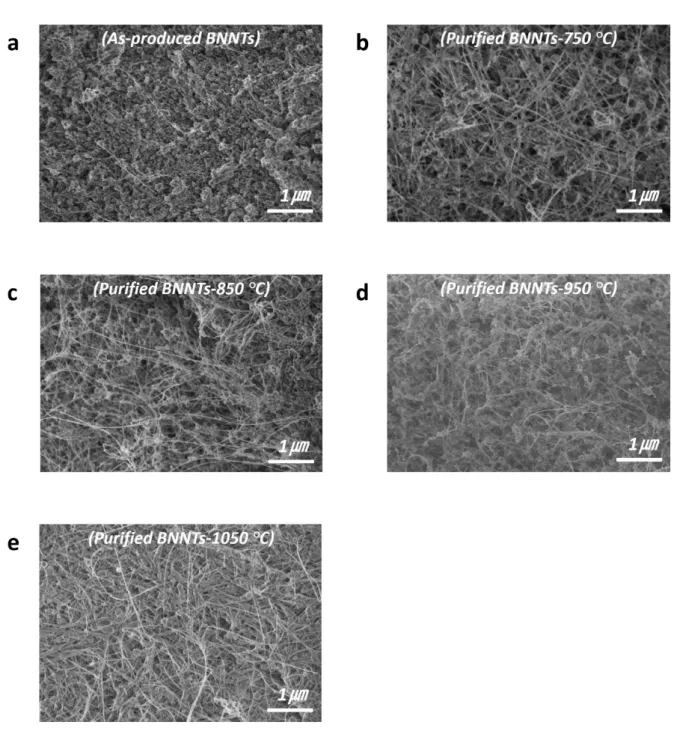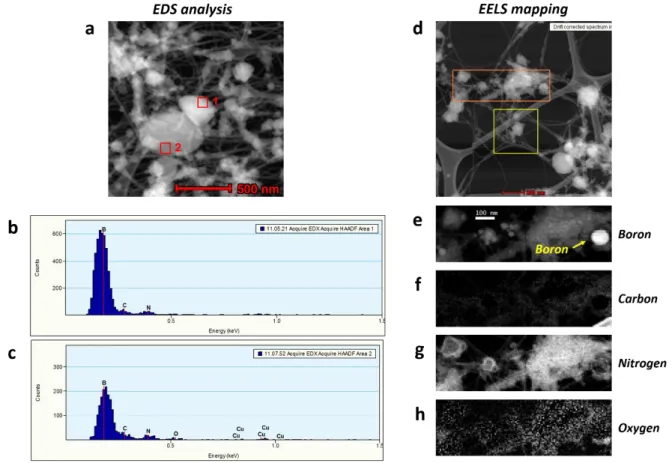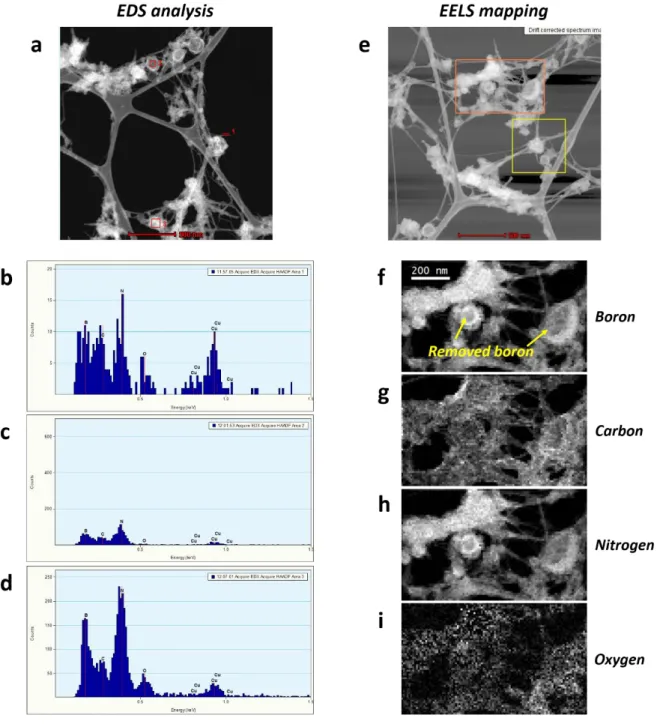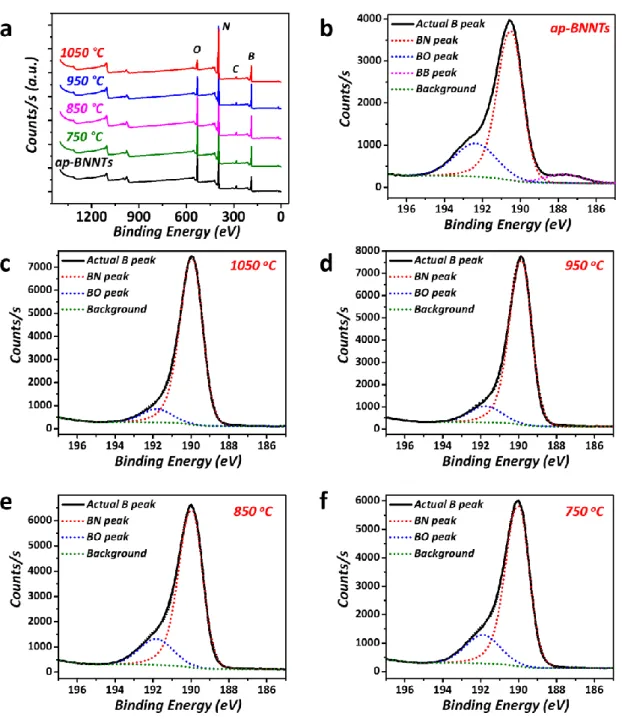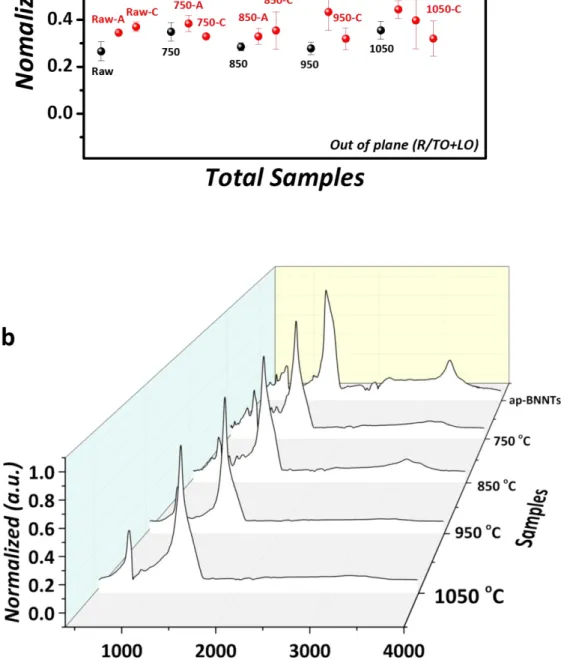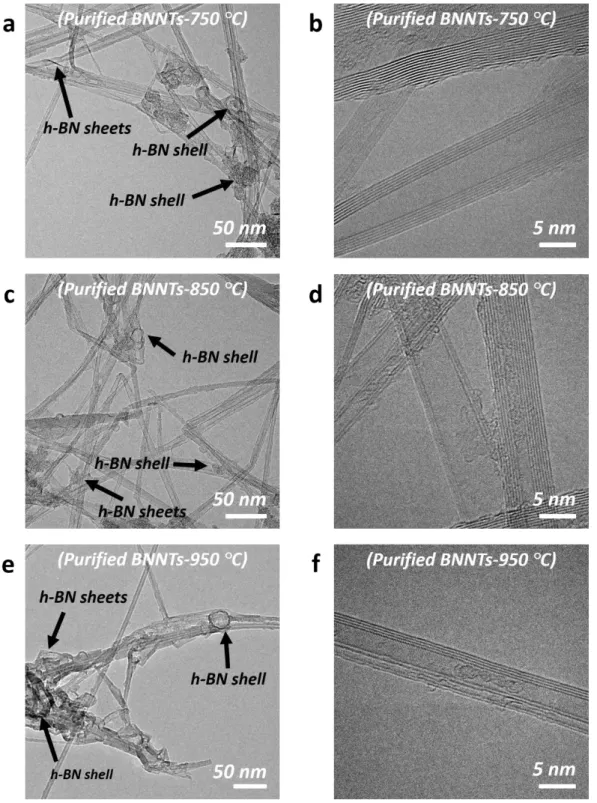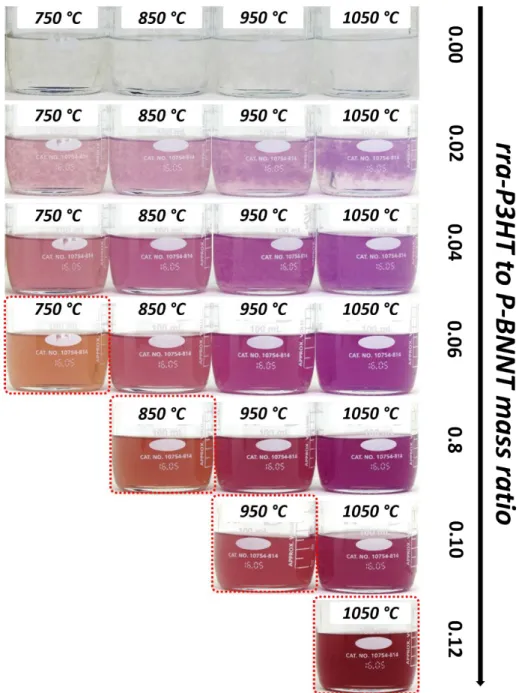1
Supporting Information
Scalable Gas-Phase Purification of Boron Nitride
Nanotubes by Selective Chlorine Etching
Hyunjin Cho†, Steven Walker†, Mark Plunkett†, Dean Ruth†, Robyn Iannitto‡, Yadienka Martinez Rubi†, Keun Su Kim†, Christa M. Homenick†, Andreas Brinkmann§, Martin Couillard‡, Stéphane Dénommée†, Jingwen Guan†, Michael B. Jakubinek†, Zygmunt J. Jakubek§, Christopher T. Kingston†, and Benoit Simard†,*
†Security and Disruptive Technologies Research Centre, National Research Council Canada,
100 Sussex Drive, Ottawa, Ontario K1A 0R6, Canada
‡Energy, Mining and Environment Research Centre, §Metrology Research Centre, National
Research Council Canada, 1200 Montreal Road, Ottawa, Ontario K1A 0R6, Canada
2
3
Procedure for titration with bromine
Boron allotropes in ap-BNNTs can be quantified by titrating with bromine using reaction [1]. As the reaction proceeds bromine is consumed and the brown colour disappears to leave white BNNT material.
2 𝐵(𝑠) + 3 𝐵𝑟2 (𝑙) → 2 𝐵𝐵𝑟3 (𝑙) [1]
In water, boron tribromide reacts to produce boric acid according to reaction [2]. 𝐵𝐵𝑟3 (𝑙) + 3 𝐻2𝑂 (𝑙) → 𝐵(𝑂𝐻)3 (𝑠)+ 3 𝐻𝐵𝑟 (𝑔) [2]
All the reaction products are colourless. Unlike chlorine, whose presence in water is pH sensitive, bromine is the dominant species throughout the pH range of 1-8. Hence, reaction [1] can proceed through to completion without the need to adjust pH. Specifically, one gram of dried ap-BNNT was weighted and placed in one litre of water in a bottle with a tight seal screw cap. Small aliquots of liquid bromine were added step-wise until a light orange colour persisted in the reaction vessel indicating the titration end-point. The reaction is slow and takes a few days to complete for a one-gram sample.
4
Figure S2. SEM images of the BNNT samples showing (a) ap-BNNTs and (b-e) BNNTs
5
Figure S3. SEM and TEM images of encapsulated boron in ap-BNNTs. (a-c) TEM images of
6
Figure S4. EDS analysis data and EELS mapping data of encapsulated boron in ap-BNNTs.
(a) STEM image of BNNTs (b-c) EDS analysis data of BNNTs (d) STEM image of ap-BNNTs (e-h) EELS mapping images of ap-ap-BNNTs
7
Figure S5. EDS analysis data and EELS mapping data of BNNTs purified at 950 °C. (a)
STEM image of BNNTs purified at 950 °C (b-c) EDS analysis data of BNNTs purified at 950 °C (e) STEM image of BNNTs purified at 950 °C (f-i) EELS mapping images of BNNTs in purified at 950 °C
8
Figure S6. EDS analysis data and EELS mapping data of BNNTs purified at 1050 °C. (a)
STEM image of BNNTs purified at 1050 °C (b-c) EDS analysis data of BNNTs purified at 1050 °C (e) STEM image of BNNTs purified at 1050 °C (f-i) EELS mapping images of BNNTs purified at 1050 °C
9
Figure S7. XPS spectra of the BNNT samples showing (a) the B, N, O, and C regions used for
calculation of the atomic compositions and (b-f) component fitting for the B 1s region. The position of the B-O peak was determined from the ap-BNNT spectrum, where it was most prominent, and the B-O peak was constrained at this position, relative to the B-N peak, in the analysis of the purified BNNT spectra.
10
Figure S8. FT-IR data showing (a) peak ratios as described in the main text and (b) spectra for
11
Figure S9. TEM images of the BNNTs purified at different temperatures: (a-b) 750 °C, (c-d)
12
Figure S10. Photographs of the purified BNNT materials (purified at different temperatures)
in CHCl3 at increasing rra-P3HT to BNNT mass ratio (0.04 to 0.12). Dotted orange rectangles
indicate the mass ratio just above the rra-P3HT coverage saturation point (Sp) for each BNNT
material. All samples contain the same initial mass (5.00 ± 0.01 mg) of purified BNNT material at a 0.1 mg/mL concentration.
13
Figure S11. (a) Photographs for ap-BNNTs suspended in CHCl3 before and after completing
the P3HT test (free P3HT removed) and, (b)UV-Vis absorption spectrum of the rra-P3HT/ap-BNNT suspension.
Procedure to remove light scattering background from UV-vis-IR extinction spectra:
The extinction spectrum of an optically thin rra-P3HT/BNNT dispersion measured with a UV-Vis-IR absorption spectrophotometer can be expressed as
𝐴 = 𝐴𝑁𝑇+ 𝐴𝑖𝑚𝑝+ 𝑆𝑁𝑇+ 𝑆𝑖𝑚𝑝 + 𝐴𝑜𝑝+ 𝐴𝑑𝑝+ 𝐴𝑓𝑝,
where 𝐴𝑁𝑇 and 𝐴𝑖𝑚𝑝 are absorption by nanotubes and impurities; 𝑆𝑁𝑇 and 𝑆𝑖𝑚𝑝 scattering by nanotubes and impurities, and 𝐴𝑜𝑝, 𝐴𝑑𝑝, and 𝐴𝑓𝑝 absorption by ordered rra-P3HT on
nanotubes, disordered rra-P3HT on nanotubes and impurities, and free rra-P3HT in solution, respectively. For a well dispersed, small-nanotube diameter materials with no free rra-P3HT, the first four terms can be well approximated by a Rayleigh-like expression
𝑆𝑒𝑓𝑓 = 𝐴𝑁𝑇+ 𝐴𝑖𝑚𝑝 + 𝑆𝑁𝑇+ 𝑆𝑖𝑚𝑝 = 𝑎 + 𝑏𝜆−𝑤𝑒𝑓𝑓,
which utilizes a single-valued effective exponent, 𝑤𝑒𝑓𝑓, and a proportionality factor,𝑏, both determined iteratively under assumptions that the corrected absorbance should not be smaller than zero at any wavelength of light in the measurement wavelength range and very small (possibly negligibly small) in the (1200 to 1800) nm range where neither nanotubes, typical impurities, nor rra-P3HT is expected to show significant light absorption. The third parameter,
14
constant a, accounts mostly for instrumental effects and in the absence of instrumental drifts most of the time can be set at or near zero. For reasonably pure, well dispersed, small-nanotube-diameter materials, the iteratively determined best estimate of the effective wavelength exponent is usually equal or slightly smaller than four. In the present case, the value for 𝑤𝑒𝑓𝑓 is 3.2, indicating that the Rayleigh approximation holds well for our rra-P3HT-BNNT samples. Hence, the effective extinction spectra for rra-P3HT/BNNT complexes as those shown in Figure 7c of the manuscript can be extracted by subtracting 𝑆𝑒𝑓𝑓 from 𝐴,
𝐴𝑟𝑟𝑎−𝑃3𝐻𝑇/𝐵𝑁𝑁𝑇 = 𝐴 − (𝑎+𝑏𝜆−𝑤𝑒𝑓𝑓)
Satisfactory description of the scattering background using Rayleigh approximation should typically indicate a relatively pure BNNT material with small diameter nanotubes. Scattering correction that would require the use of the effective wavelength exponent significantly smaller than four, may indicate presence of a significant fraction of large impurity nanoparticles, large nanotube bundles, or large diameter nanotubes.
